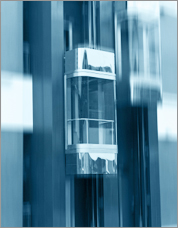What is an elevator pitch? It’s that short, concise sound bite that explains what you do. It’s a verbal presentation about the products and services you take to market. It’s the time it takes to ride an elevator from the first floor to the boardroom at the top of the building. Not so long ago, a good elevator pitch was deemed to last 2 minutes; but in today’s business environment you’d probably lose your audience’s interest before the minute was up. It’s not so much that elevator rides have increased speed (although in New York that may be the case), in today’s business environment you’re likely to get only 30 seconds to deliver the pitch before your audience moves on to their next task. Just 30 seconds to describe everything you do – that’s a single short commercial or the time it takes to read this paragraph out loud.
What makes a good elevator pitch? You have to show how you solve a client’s business or technical issue. Unfortunately, most elevator pitches I hear do nothing more than describe the wonders of the product for sale, or the brilliance of the organization that sells it. Rarely do I hear an elevator pitch that focuses on a business issue or a pain point. Many pitches start with statements like: “We’ve been in business for twenty years …”, or “Our product is the leading….”, or “Our mission is to…”. All great stuff, but do you think that your elevator companion really cares about all that?
Any marketing message that resolves around the features and benefits of your products or services will be largely ignored unless it addresses a specific problem or need. Think about your own elevator pitch. Is it focused on you – or does it address the business and technical pain points that your prospects and clients wrestle with each day? Remember, when someone asks you what your company does, they are most likely asking, “How can you help me to perform my job more effectively?” Being in business for twenty years, while being of great interest to you, may not be that compelling to your audience.
There’s a fun, if somewhat hokey, video on creating an elevator pitch at: https://youtu.be/Tq0tan49rmc . A good elevator pitch contains two key elements. First, what is the pain statement that you solve, and second, how you solve that proposition – and remember, you’ve only got 30 seconds to do that all that. Your elevator pitch needs to be unique. If you can substitute your competitor’s name for yours in the pitch, then you’ve still got a lot more work to do.
One of our clients’ elevator pitch starts with the statement: “Many organizations tell us that one of their biggest concerns is producing accurate business reports from multiple sources of information, we’ve been able to help them in the following way …”. This works well because it starts with the pain point and then transitions to how they help their customers.
When delivering the pitch, stay on target, there’s no time for rambling off topic or indulging in topics that only interest to you. Keep the message succinct and easily understood in short, sharp sound bites.
Here are the key components of a good elevator pitch:

If you’re a startup founder working on your pitch for investors, here’s a great article covering some do’s and don’ts when pitching to investors.
Have a great elevator pitch to share, add it to the comments box below!
